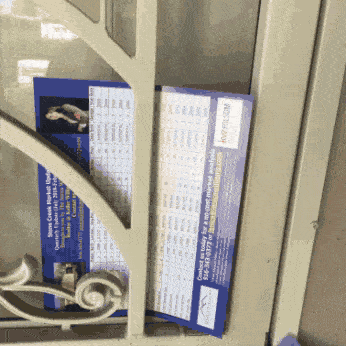[ad_1]
Last Updated on February 12, 2024 by BVN
James Causey | CHJ Fellow
How much do you pay for gas? How much is your electric bill? What about cable?
Those numbers popped into your head right away, right?
Now, about your last hospital bill? How much did you pay for the Band-Aid they used after they drew your blood? Did you know how much your last breast biopsy or hip replacement was going to cost you out-of-pocket before your procedure? Chances are you didn’t.
If you go to a hospital for a procedure, your out-of-pocket costs are rarely discussed. And therein lies the problem. Most patients don’t know how much they must pay for the procedure until they get their bill in the mail months later.
Why?
Well, in my case, that’s the $8,523 question. (More to come on this a bit later in our story.)
For years, patient advocates and health policy experts have called for transparency in hospital prices to make it easier for patients to compare prices, save money, and avoid financial debt. The goal should be to allow patients to make the best health and financial decisions. Still, most prices are not openly disclosed, and the government doesn’t seem ready to punish the non-compliant.
By Jan. 1, 2021, U.S. hospitals had to make a public list of the standard charges for most items and services. However, according to a January 2023 article in the Journal of General Internal Medicine, most hospitals are not compliant.
While this lack of transparency hurts all patients, another report says Blacks and low-income patients in rural areas are hurt the most by murky hospital prices.
Rappers unite to push for hospital pricing transparency
Medical debt incurred from health care costs is an increasing problem for older Americans, especially African Americans and Latinos. African Americans had 2.6 times higher odds of having medical debt than whites, according to this 2016 study. More than half of Black Americans and 50% of Latinos have medical debt, compared to 37% of whites, according to a 2022 Kaiser Family Foundation report.
Blacks are also more likely to be contacted by a collection agency and to borrow money because of medical debt. In contrast, the study said whites are more likely to use their savings.
Worrying about how you are going to pay for a medical bill is stressful, and it should be the last thing a person in recovery is thinking about as they try to heal.
This kind of stress could be significantly reduced if patients had access to actual prices in health care, according to some of the most iconic men in the hip-hop industry.
Last year, hip-hop heavy hitters Chuck D, Fat Joe, Rick Ross, French Montana, Method Man, and Busta Rhymes joined forces with the nonprofit Power to the Patients to roll out a series of PSAs pushing for affordable and equitable health care.
In one of the 30-second ads, the rappers jointly say, “Today, all across the country, hospitals and insurers hide their prices, and it’s creating fear, debt, and devastation all over this country.”
The video continues: “We need actual prices in health care. Not averages, not estimates. We need real prices … We demand prices and transparency in health care.”
It’s call for elected officials, health care executives, and insurance companies to begin informing patients how much they will have to pay out of pocket.
The push for transparency from some of the most respected rappers is a big deal because the hip-hop community can galvanize young people from different races, classes, and communities together to fight for a cause.
America got a sense of how powerful those young voices can be after the nation watched in disbelief as a video showed a white police officer kneeling on the neck of George Floyd for nine minutes in Minneapolis on May 25, 2020, killing the handcuffed black man. Before he died, Floyd could be heard telling police that he can’t breathe at least 16 times. “Please, the knee in my neck. I can’t breathe.”
After Floyd’s death, young protesters marched in 140 cities across the U.S. to demand changes in law enforcement and an end to racism.
Buildings were set ablaze, a police station was burned down, some police offices were defunded, and some demands were met.
Imagine if the hip-hop community could get even a sliver of that same enthusiasm and demand for justice on hospital pricing transparency.
Technically, all hospitals are supposed to comply with the 2021 federal law. Still, they have no incentive to move beyond a snail’s pace because, since some political officials have already said they should be given time to become compliant.
A set of regulations issued by the U.S. Departments of Treasury, Labor, and Health and Human Services rolled out in three phases.
Phase one: Health plans were supposed to publicly post readable files for in-network and out-of-network rates by Jan. 1, 2022.
Phase two: Health plans were supposed to provide an internet service tool with information on costs for 500 specified items and services by Jan. 1, 2023.
Phase three: Expand phase two to all items and services by Jan. 1, 2024.
Most hospitals are not yet fully compliant.
Our hospital billed us for $8,500 over what they told us
The problem with hospital pricing transparency is compounded by the fact that in 2022, 42% of American adults without health insurance skipped medical treatment because they couldn’t afford it, compared with 26% of Americans with health insurance.
African Americans and Hispanics are more likely not to have insurance. Those who are at a higher risk for heart disease, kidney failure, prostate cancer, and asthma? African Americans and Hispanics.
Although my wife and child are on my company’s insurance plan, higher health care and “hidden costs” have made my family hesitant to go to the doctor.
My wife Damia made local news when she posted on Facebook how we received a bill from the hospital for more than $8,500 over the estimated cost of her surgery.
Before Damia had surgery for a parathyroidectomy in August 2020, she asked met with the hospital’s financial counselor And was told our out-of-pocket expense would be $1,101.99.
However, we got our bill for $9,624.99 — that’s $8,523 over what we were told it would cost.
When my wife called the hospital to get to the bottom of the huge discrepancy, we were told Damia was billed for a doctor who was in the room and just watched her surgeon perform the surgery. The doctor then billed the insurance company, and it was rejected because the doctor was out-of-network. Insurance kicked it back to us, resulting in an outrageous bill.
This immediately made me think of “The Junior Mint” Seinfeld episode, where Jerry and Kramer joined medical students in a hospital operating theater to watch one of Elaine’s ex-boyfriends get a splenectomy. Kramer moves for a better view and even issues a “Psst!” at the surgeon because he could not see.
My wife couldn’t give consent to the arrangement in the room because she was under anesthesia, and the assistant who “watched” the surgery was not even in our network.
When local news picked up on the story, they interviewed my wife. They called the Medical College of Wisconsin asking about the case, and the hospital quickly said they cleared it up. The embarrassment caused the hospital to pay the observing surgeon’s cost and the entire bill.
“Even if you are awake and you say, Who is this other person, they say, Well, this person will be assisting me. Do you know to ask at that moment, ‘Hey, before you cut me open, is this person covered under my insurance?’” Damia told the Milwaukee station WTMJ-TV.
“How are we as patients supposed to be able to advocate for ourselves if there’s information we don’t know?” she asked.
Imagine if the hospital would have pulled this stunt on someone who didn’t know the power of the pen. This unexpected bill would have crippled most in my hometown of Milwaukee. For a city that has one of the poorest African American populations in the country, this bill could have been catastrophic.
The bottom line is that there is no reason not to have hospital pricing transparency. And those prices need to be established upfront — the price for a procedure shouldn’t change depending on who pops into the surgery room while a patient is under the knife.
[ad_2]









